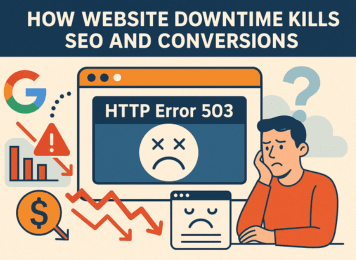Real-time monitoring tools aren’t just for developers. They’re business-critical safeguards for uptime, SEO, and reputation.
How Website Monitoring Detects Issues Before They Impact SEO
The importance of real-time monitoring for uptime tracking
Downtime often begins with small performance dips. Monitoring tools track these early signs — CPU spikes, slow database queries, server response anomalies — before they escalate.
How automated alerts prevent prolonged downtime
Alerts allow teams to respond within minutes rather than hours. The faster the fix, the less data Google loses — and the more users stay engaged.
Traditional manual checks often fail to catch problems before they escalate, especially outside of business hours. Let’s compare both approaches:
| Approach |
Detection Speed |
Coverage |
Impact on SEO |
| Manual checks |
Slow (hours/days) |
Limited (only what you test) |
Issues often go unnoticed too long |
| Automated tools |
Instant (seconds) |
Full-stack (uptime, SSL, load) |
Early alerts protect rankings & traffic |
As the table shows, automation isn't just faster — it's significantly more comprehensive, making it essential for businesses aiming to preserve SEO integrity and customer experience.
The Role of Proactive Monitoring in SEO & Website Health
Why regular performance audits prevent SEO ranking drops
Scheduled audits identify weaknesses in hosting, plugins, or load handling before they cause visible issues. Many businesses only check performance when something breaks — by then, it’s too late.
How monitoring tools help businesses maintain site stability
Tools like uptime monitors, error logging systems, and synthetic testing simulate user journeys to catch disruptions early. As discussed in our breakdown of website monitoring and SEO myths, proactive monitoring is often the only line of defense between your site and an SEO drop.
